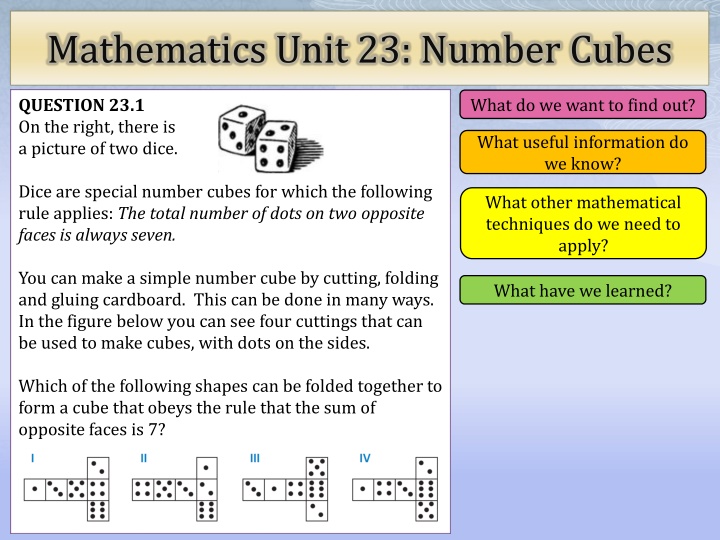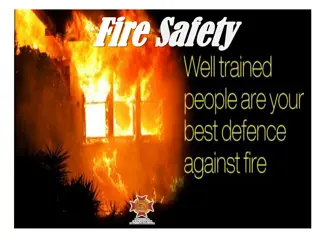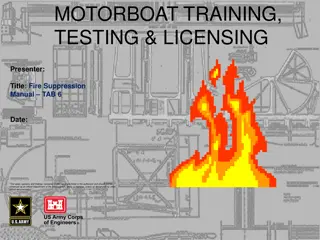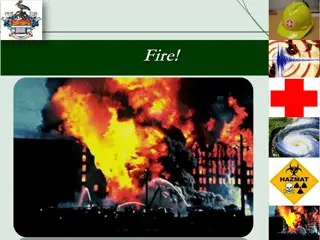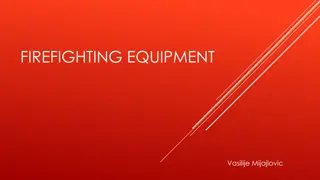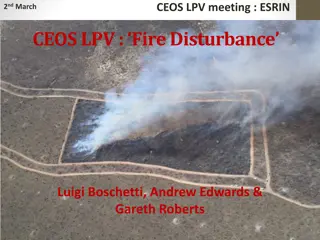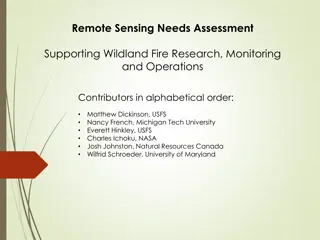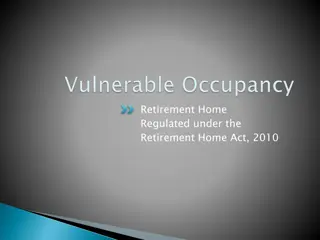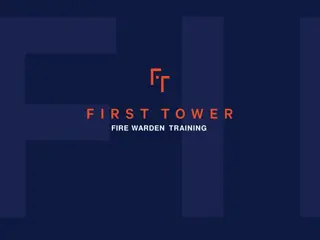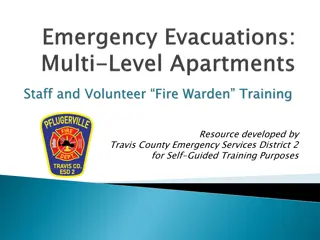Fire New Products and Bharat Griha Raksha Policy Details
This content introduces "Fire New Products" and provides detailed information about the "Bharat Griha Raksha Policy" which covers Home Building and/or Home Contents against Fire and Allied Perils. The policy includes various in-built covers, optional covers, and provisions for terrorism coverage. It also mentions auto escalation of up to 10% per annum and innovative add-ons. Additionally, the "Bharat Sookshma Udyam Suraksha" policy is briefly described for offices, hotels, shops, and industrial/manufacturing risks in India with a value at risk not exceeding 5 Crore.
Download Presentation

Please find below an Image/Link to download the presentation.
The content on the website is provided AS IS for your information and personal use only. It may not be sold, licensed, or shared on other websites without obtaining consent from the author.If you encounter any issues during the download, it is possible that the publisher has removed the file from their server.
You are allowed to download the files provided on this website for personal or commercial use, subject to the condition that they are used lawfully. All files are the property of their respective owners.
The content on the website is provided AS IS for your information and personal use only. It may not be sold, licensed, or shared on other websites without obtaining consent from the author.
E N D
Presentation Transcript
Mathematics Unit 23: Number Cubes What do we want to find out? What do we want to find out? QUESTION 23.1 On the right, there is a picture of two dice. What useful information do we know? What useful information do we know? Dice are special number cubes for which the following rule applies: The total number of dots on two opposite faces is always seven. What other mathematical techniques do we need to apply? What other mathematical techniques do we need to apply? You can make a simple number cube by cutting, folding and gluing cardboard. This can be done in many ways. In the figure below you can see four cuttings that can be used to make cubes, with dots on the sides. What have we learned? What have we learned? Which of the following shapes can be folded together to form a cube that obeys the rule that the sum of opposite faces is 7?
Mathematics Unit 23: Number Cubes What do we want to find out? QUESTION 23.1 On the right, there is a picture of two dice. What useful information do we know? What useful information do we know? Dice are special number cubes for which the following rule applies: The total number of dots on two opposite faces is always seven. What other mathematical techniques do we need to apply? What other mathematical techniques do we need to apply? You can make a simple number cube by cutting, folding and gluing cardboard. This can be done in many ways. In the figure below you can see four cuttings that can be used to make cubes, with dots on the sides. What have we learned? What have we learned? Which of the following shapes can be folded together to form a cube that obeys the rule that the sum of opposite faces is 7? Back to start Back to start
Mathematics Unit 23: Number Cubes What do we want to find out? What do we want to find out? QUESTION 23.1 On the right, there is a picture of two dice. What useful information do we know? Dice are special number cubes for which the following rule applies: The total number of dots on two opposite faces is always seven. What other mathematical techniques do we need to apply? What other mathematical techniques do we need to apply? You can make a simple number cube by cutting, folding and gluing cardboard. This can be done in many ways. In the figure below you can see four cuttings that can be used to make cubes, with dots on the sides. What have we learned? What have we learned? Which of the following shapes can be folded together to form a cube that obeys the rule that the sum of opposite faces is 7? Back to start Back to start
Mathematics Unit 23: Number Cubes What do we want to find out? What do we want to find out? QUESTION 23.1 On the right, there is a picture of two dice. What useful information do we know? What useful information do we know? Dice are special number cubes for which the following rule applies: The total number of dots on two opposite faces is always seven. What other mathematical techniques do we need to apply? You can make a simple number cube by cutting, folding and gluing cardboard. This can be done in many ways. In the figure below you can see four cuttings that can be used to make cubes, with dots on the sides. What have we learned? What have we learned? Which of the following shapes can be folded together to form a cube that obeys the rule that the sum of opposite faces is 7? Back to start Back to start
Mathematics Unit 23: Number Cubes What do we want to find out? What do we want to find out? QUESTION 23.1 On the right, there is a picture of two dice. What useful information do we know? What useful information do we know? Dice are special number cubes for which the following rule applies: The total number of dots on two opposite faces is always seven. What other mathematical techniques do we need to apply? What other mathematical techniques do we need to apply? You can make a simple number cube by cutting, folding and gluing cardboard. This can be done in many ways. In the figure below you can see four cuttings that can be used to make cubes, with dots on the sides. What have we learned? Which of the following shapes can be folded together to form a cube that obeys the rule that the sum of opposite faces is 7? Back to start Back to start
